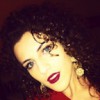Kosovar houses The Emin Gjiku Ethnological Museum, a beautiful complex of traditional Kosovar houses, lies hidden among the more modern and recently constructed high-rises in Kosovo’s capital of Prishtina.
It is a pleasant place to come and visit from time to time, as they also serve the guests a traditional pie-like dish called “flia,” which you get to eat in the archaic garden of the complex.
My sister and I decided to take the following pictures of yoga inspired poses within the ethnological museum to represent the beauty of our culture.
We have started a little independent project and will be traveling all around Kosovo, taking pictures of yoga poses inspired by our historical landmarks, daily life, rituals and natural landscapes—all with the hope of bringing light to the beauty of our new country.
1. The Main Family House
This is the main family house where you can learn all about the cycle of life as lived and depicted by the Kosovar-Albanian culture. In this house there is a room for each cycle in life—one that shows you the birth, life and death rituals of the culture.
Every period of life is portrayed through music and visually.
In the birth room you can listen to lullabies and rock the cradle—called “djep” in Albanian. As you walk up the stairs, there is a room that houses a traditional spinning wheel among many other elements, showing you the daily crafts of Kosovar-Albanians in the older days.
When coming down, as you are ready to leave the main house, you enter the last cycle of human life where you have a chance to listen and see an improvised (through requisites) end of life ritual.
2. Entering the Guesthouse
We are here getting ready to enter the guesthouse. Upon entrance, we will sit in the main room—commonly called “Oda” in Albanian.
The “Oda” played an important role in the development of the Kosovar-Albanian culture. It was a meeting point of the heads of houses and a place where community leaders would gather to discuss village matters and bring about decisions.
3. The Cardak
This is the “çardak,” a window enclosed porch, as you can see. It would usually be located on the first floor or on an upper level—though almost regularly would be sticking out of the main house. In this case, it looks down on the beautiful and archaic garden of the Emin Gjiku complex.
This is a common place for the family to invite the guests for a cup of tea, or coffee, to discuss their recent familial or community developments.
4. The Women’s Room
This is the Women’s Room. Beautifully hand-tailored clothes fill up this part of the house.
Sitting here in lotus pose, as this is a common pose in our culture as well, with a slight variation, we sit in “bagdash,”—a seated position most commonly used when eating at a very low rise table called “sofra,” or when in the guest room,”Oda.”
5. The Corridor of the Emin Gjiku Family House
Here is warrior I pose, to fit with the warrior themed decorations in the corridor of the Emin Gjiku family house.
I am also wearing a “plis” which is a traditional brimless felt cap. It is thought that it descends from the Illyrian cap. The shape of the cap changes depending on the regions inhabited by Albanians.
6. Revisiting the Women’s Room in Emin Gjiku’s House
Back to the Women’s Room in Emin Gjiku’s house—here you can see the wooden drawers which are full of handcrafted silver jewelry. You can also get a sneak peak of the folk clothes.
Garments significantly vary from region to region all around the Albanian territories and Kosovo so there are quite a diversity of them displayed—from everyday clothes to ceremonial dresses. Some tend to be more colorful and lively, while others are of a darker tone.
Here is a variation of kneeled warrior pose, more of a dancing type pose—as we have a distinctive dance in our culture, what we call “valle,” particularly danced in wedding ceremonies.
Like elephant journal on Facebook
Assistant Ed: Laura Ashworth/Ed: Bryonie Wise
Photos: Rina Hapciu






Read 0 comments and reply